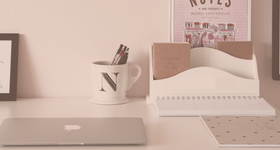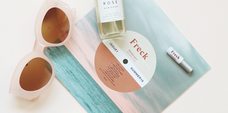
Paper Thickness Chart & Information
- Jan 02, 2013
Paper Thickness Chart & Information
(Left to Right = Similar Thickness / Top to Bottom = Increases in Thickness / Bolded Weights Link to Products at that Thickness)
| Bond | Cover | Index | Text | Metric |
|---|---|---|---|---|
| 20 | 28 | 42 | 50 | 75 gsm |
| 24 | 33 | 50 | 60 | 90 gsm |
| 28 | 39 | 58 | 70 | 105 gsm |
| 32 | 45 | 67 | 80 | 120 gsm |
| 38 | 50 | 77 | 100 | 140 gsm |
| 43 | 60 | 90 | 110 | 162 gsm |
| 47 | 65 | 97 | 120 | 177 gsm |
| 53 | 74 | 110 | 135 | 199 gsm |
| 58 | 80 | 120 | 146 | 218 gsm |
| 65 | 90 | 135 | 165 | 245 gsm |
| 72 | 100 | 150 | 183 | 271 gsm |
Why Are Paper Weights So Confusing?
The problem stems from the fact that each grade of paper (bond, cover, etc.) has a different “parent size” for its sheets. All paper is manufactured from their parent sizes and are then cut down to the more common sizes we use every day.
Here's a list of common paper types and the size of their parent sheets.
| Paper Type | Parent Size |
|---|---|
| Bond | 17″ x 22″ |
| Book, Text | 25″ x 38″ |
| Bristol | 22 1/2″ x 28 1/2″ |
| Cover | 20″ x 26″ |
| Index | 25 1/2″ x 30 1/2″ |
| Tag | 24″ x 36″ |
Now to determine the weight, manufacturers will weigh one ream (500 sheets) of the paper’s parent sheets. Therefore, 500 20″ x 26″ sheets of 60lb Cover stock would actually weigh 60 pounds.
We understand that it's complicated, but the guide above should help. However, if you still need some more information, our friendly staff can certainly answer any questions you may have.
The Value of Knowing Paper Types
Each paper type has its own set of characteristics that work with or against certain printers. As a D.I.Yer, it is always helpful to know these differences, even if a paper type is not important to your purchase.
Here's a list of the most common types of paper, along with a description of each.
|
BOND: A strong type used in most copiers and desktop printers in the form of 8 ½” X 11″ 20lb standard copy paper. The reason it is so popular is it absorbs ink very well. This is due, in part, to the paper’s cotton fiber content. It typically ranges from 25% to 50%. **Bond paper used in faster laser printers tend to lack this high cotton content and may jam these machines easily** BOOK: Aptly named, this paper is found in, well, books. It is well suited for two-sided printing and is very durable as well as relatively inexpensive. BRISTOL: Originally produced in Bristol, England, this paper is a heavy, board-grade paper with a soft surface used, among other things, for catalog or paperback book covers. It is often manufactures by layering thinner papers together. COVER: Cover paper, also known as cardstock, is a heavy, stiff sheet which folds and resists damage well. Because of its durability, it is very common, used for folders, business cards, greeting cards, post cards and scorecards. INDEX: Index paper is stiff, inexpensive and absorbs ink well, making it the prime choice for index cards and business reply cards. NEWSPRINT: Newsprint paper is used almost exclusively for newspapers, because it is recycled and cheap. OFFSET: This paper is used in offset printing presses because of its ability to resist tearing in the large fast machines. TAG: Tag paper is dense and strong, used for store tags. TEXT: Text paper comes in many different colors and textures making it perfect for such applications as announcements and brochures. SPECIALTY PAPERS: These include rice paper and the ultra-thin onion skin paper, also known as tissue paper. |
©2018 Desktop Publishing Supplies Inc.
More About 
Since 1995, we've hung our hats on delivering quality paper with an exceptional customer experience. When shopping with us, you'll discover a wide range of blank business cards, cardstock, stationery, greeting cards, menus, and more! If you ever have any questions, please don't hesitate to reach out.














